30 start with S start with S
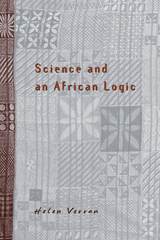
In this captivating book, Helen Verran addresses precisely that question by looking at how science, mathematics, and logic come to life in Yoruba primary schools. Drawing on her experience as a teacher in Nigeria, Verran describes how she went from the radical conclusion that logic and math are culturally relative, to determining what Westerners find so disconcerting about Yoruba logic, to a new understanding of all generalizing logic. She reveals that in contrast to the one-to-many model found in Western number systems, Yoruba thinking operates by figuring things as wholes and their parts. Quantity is not absolute but always relational. Certainty is derived not from abstract logic, but from cultural practices and associations.
A powerful story of how one woman's investigation in this everday situation led to extraordinary conclusions about the nature of numbers, generalization, and certainty, this book will be a signal contribution to philosophy, anthropology of science, and education.
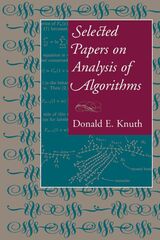
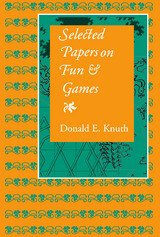
Donald E. Knuth’s influence in computer science ranges from the invention of methods for translating and defining programming languages to the creation of the TeX and METAFONT systems for desktop publishing. His award-winning textbooks have become classics that are often given credit for shaping the field, and his scientific papers are widely referenced and stand as milestones of development over a wide variety of topics. The present volume is the eighth in a series of his collected papers.

Chandrasekhar has selected papers that trace the development of his ideas and that present aspects of his work not fully covered in the books he has periodically published to summarize his research in each area.
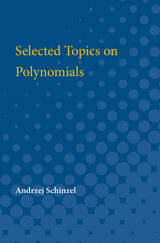
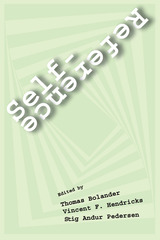
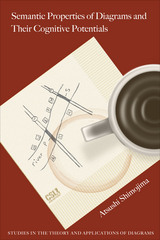
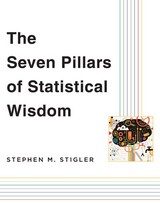
What gives statistics its unity as a science? Stephen Stigler sets forth the seven foundational ideas of statistics—a scientific discipline related to but distinct from mathematics and computer science.
Even the most basic idea—aggregation, exemplified by averaging—is counterintuitive. It allows one to gain information by discarding information, namely, the individuality of the observations. Stigler’s second pillar, information measurement, challenges the importance of “big data” by noting that observations are not all equally important: the amount of information in a data set is often proportional to only the square root of the number of observations, not the absolute number. The third idea is likelihood, the calibration of inferences with the use of probability. Intercomparison is the principle that statistical comparisons do not need to be made with respect to an external standard. The fifth pillar is regression, both a paradox (tall parents on average produce shorter children; tall children on average have shorter parents) and the basis of inference, including Bayesian inference and causal reasoning. The sixth concept captures the importance of experimental design—for example, by recognizing the gains to be had from a combinatorial approach with rigorous randomization. The seventh idea is the residual: the notion that a complicated phenomenon can be simplified by subtracting the effect of known causes, leaving a residual phenomenon that can be explained more easily.
The Seven Pillars of Statistical Wisdom presents an original, unified account of statistical science that will fascinate the interested layperson and engage the professional statistician.
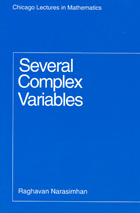
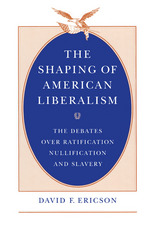
Focusing on three critical debates in American history—the debate between Anti-Federalists and Federalists over the ratification of the Constitution; the debate between the national republicans and the states-rights republicans over the nullification of the tariff; and the Lincoln-Douglas debates over slavery and pluralist democracy—Ericson shows that republicanism, rather than being opposed to liberalism, is in fact an offshoot of it. His descriptions of republicanism and pluralism represent the poles of an evolving tradition of liberal ideas in America: the former championing the claims of the public sphere, general welfare, and civic virtue; the latter protecting the rights of the individual to liberty, property, and privacy.
Republicanism and pluralism are therefore more properly understood as two sets of competing ideas that evolved from common roots. Ericson concludes that although republican themes persist in American politics, the profound transformations brought about by the Civil War made the ascendancy of pluralism virtually inevitable.
This highly original discussion of the relation between liberalism and republicanism—the central concern of much of the recent scholarship in American political thought—will be important reading for those interested in American politics, history, and culture.
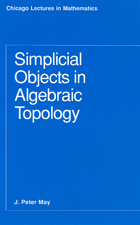
Since it was first published in 1967, Simplicial Objects in Algebraic Topology has been the standard reference for the theory of simplicial sets and their relationship to the homotopy theory of topological spaces. J. Peter May gives a lucid account of the basic homotopy theory of simplicial sets, together with the equivalence of homotopy theories alluded to above. The central theme is the simplicial approach to the theory of fibrations and bundles, and especially the algebraization of fibration and bundle theory in terms of "twisted Cartesian products." The Serre spectral sequence is described in terms of this algebraization. Other topics treated in detail include Eilenberg-MacLane complexes, Postnikov systems, simplicial groups, classifying complexes, simplicial Abelian groups, and acyclic models.
"Simplicial Objects in Algebraic Topology presents much of the elementary material of algebraic topology from the semi-simplicial viewpoint. It should prove very valuable to anyone wishing to learn semi-simplicial topology. [May] has included detailed proofs, and he has succeeded very well in the task of organizing a large body of previously scattered material."—Mathematical Review
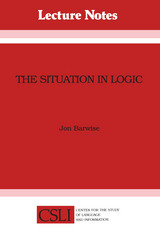
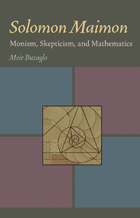
This provides the key to understanding Maimon’s solution to Kant’s quid juris question concerning the connection between intuition and concept in mathematics. Maimon’s original approach avoids dispensing with intuition (as in some versions of logicism and formalism) while reducing the reliance on intuition in its Kantian sense. As Buzaglo demonstrates, this led Maimon to question Kant’s ultimate rejection of the possibility of metaphysics and, simultaneously, to suggest a unique type of skepticism.
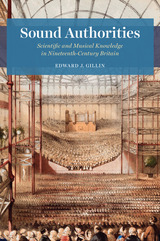
Sound Authorities shows how experiences of music and sound played a crucial role in nineteenth-century scientific inquiry in Britain.
In Sound Authorities, Edward J. Gillin focuses on hearing and aurality in Victorian Britain, claiming that the development of the natural sciences in this era cannot be understood without attending to the study of sound and music.
During this time, scientific practitioners attempted to fashion themselves as authorities on sonorous phenomena, coming into conflict with traditional musical elites as well as religious bodies. Gillin pays attention to sound in both musical and nonmusical contexts, specifically the cacophony of British industrialization. Sound Authorities begins with the place of acoustics in early nineteenth-century London, examining scientific exhibitions, lectures, spectacles, workshops, laboratories, and showrooms. He goes on to explore how mathematicians mobilized sound in their understanding of natural laws and their vision of a harmonious ordered universe. In closing, Gillin delves into the era’s religious and metaphysical debates over the place of music (and humanity) in nature, the relationship between music and the divine, and the tensions between spiritualist understandings of sound and scientific ones.

An understanding of the developments in classical analysis during the nineteenth century is vital to a full appreciation of the history of twentieth-century mathematical thought. It was during the nineteenth century that the diverse mathematical formulae of the eighteenth century were systematized and the properties of functions of real and complex variables clearly distinguished; and it was then that the calculus matured into the rigorous discipline of today, becoming in the process a dominant influence on mathematics and mathematical physics.
This Source Book, a sequel to D. J. Struik’s Source Book in Mathematics, 1200–1800, draws together more than eighty selections from the writings of the most influential mathematicians of the period. Thirteen chapters, each with an introduction by the editor, highlight the major developments in mathematical thinking over the century. All material is in English, and great care has been taken to maintain a high standard of accuracy both in translation and in transcription. Of particular value to historians and philosophers of science, the Source Book should serve as a vital reference to anyone seeking to understand the roots of twentieth-century mathematical thought.

The Source Book contains 75 excerpts from the writings of Western mathematics from the thirteenth to the end of the eighteenth century. The selection has been confined to pure mathematics or to those fields of applied mathematics that had a direct bearing on the development of pure mathematics.
The authors range from Al-Khwarizmi (a Latin translation of whose work was much used in Europe), Viète, and Oresme, to Newton, Euler, and Lagrange. The selections are grouped in chapters on arithmetic, algebra, geometry, and analysis. All the excerpts are translated into English. Some of the translations have been newly made by Mr. and Mrs. Struik; if a translation was already available it has been used, but in every such case it has been checked against the original and amended or corrected where it seemed necessary. The editor has taken considerable pains to put each selection in context by means of introductory comments and has explained obscure or doubtful points in footnote wherever necessary.
The Source Book should be particularly valuable to historians of science, but all who are concerned with the origins and growth of mathematics will find it interesting and useful.

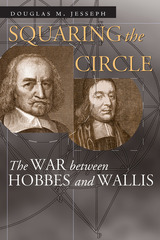
Hobbes believed that by recasting geometry in a materialist mold, he could solve any geometric problem and thereby demonstrate the power of his materialist metaphysics. Wallis, a prominent Presbyterian divine as well as an eminent mathematician, refuted Hobbes's geometry as a means of discrediting his philosophy, which Wallis saw as a dangerous mix of atheism and pernicious political theory.
Hobbes and Wallis's "battle of the books" illuminates the intimate relationship between science and crucial seventeenth-century debates over the limits of sovereign power and the existence of God.

A long-overdue guide on how to use statistics to bring clarity, not confusion, to policy work.
Statistics are an essential tool for making, evaluating, and improving public policy. Statistics for Public Policy is a crash course in wielding these unruly tools to bring maximum clarity to policy work. Former White House economist Jeremy G. Weber offers an accessible voice of experience for the challenges of this work, focusing on seven core practices:
- Thinking big-picture about the role of data in decisions
- Critically engaging with data by focusing on its origins, purpose, and generalizability
- Understanding the strengths and limits of the simple statistics that dominate most policy discussions
- Developing reasons for considering a number to be practically small or large
- Distinguishing correlation from causation and minor causes from major causes
- Communicating statistics so that they are seen, understood, and believed
- Maintaining credibility by being right (or at least respectably wrong) in every setting
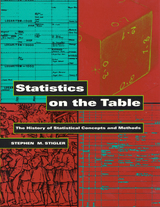
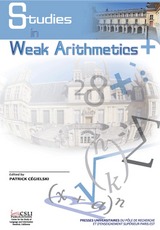
The field of weak arithmetics is an application of logical methods to number theory that was developed by mathematicians, philosophers, and theoretical computer scientists. In this volume, after a general presentation of weak arithmetics, the following topics are studied: the properties of integers of a real closed field equipped with exponentiation; conservation results for the induction schema restricted to first-order formulas with a finite number of alternations of quantifiers; a survey on a class of tools called pebble games; the fact that the reals e and pi have approximations expressed by first-order formulas using bounded quantifiers; properties of infinite pictures depending on the universe of sets used; a language that simulates in a sufficiently nice manner all algorithms of a certain restricted class; the logical complexity of the axiom of infinity in some variants of set theory without the axiom of foundation; and the complexity to determine whether a trace is included in another one.
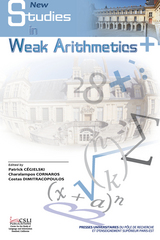
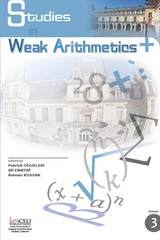
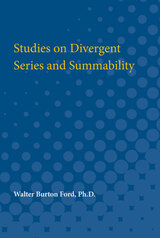

Stodolsky presents a challenge to educational research. She shows that classroom activities are coherent actions shaped by the instructional context—especially what is taught. Stodolsky contradicts the received view of both teaching and learning as uniform and consistent. Individual teachers arrange instruction very differently, depending on what they are teaching, and students respond to instruction very differently, depending on the structure and demands of the lesson.
The instructional forms used in math classes, a "basic" subject, and social studies classes, an "enrichment" subject, differ even when the same teacher conducts both classes. Social studies classes show more diversity in activities, while math classes are very similar to one another. Greater variety is found in social studies within a given teacher's class and when different teachers' classes are compared. Nevertheless, in the classrooms Stodolsky studied, the range of instructional arrangements is very constricted.
Challenging the "back to basics" movement, Stodolsky's study indicates that, regardless of subject matter, students are more responsive to instruction that requires a higher degree of intellectual complexity and performance, to learning situations that involve them in interaction with their peers, and to active modes of learning. Stodolsky also argues that students develop ideas about how to learn a school subject, such as math, by participating in particular activities tied to instruction in the subject. These conceptions about learning are unplanned but enduring and significant consequences of schooling.
The Subject Matters has important implications for instructional practice and the training, education, and supervision of teachers. Here is a new way of understanding the dynamics of teaching and learning that will transform how we think about schools and how we study them.
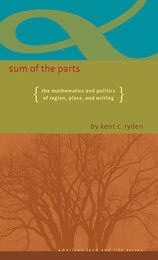
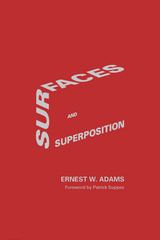
This book examines the dimensionality of surfaces, how superpositions can make stable frameworks, and gives a quasi-Leibnizian account of the relative `spaces' that are defined by these frameworks. Concluding chapters deal with problems concerning the spatio-temporal frameworks of physical theories and implications for theories of visual geometry. The numerous illustrations, while surprisingly simple, are satisfyingly clear.
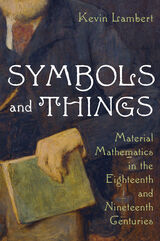
In the steam-powered mechanical age of the eighteenth and nineteenth centuries, the work of late Georgian and early Victorian mathematicians depended on far more than the properties of number. British mathematicians came to rely on industrialized paper and pen manufacture, railways and mail, and the print industries of the book, disciplinary journal, magazine, and newspaper. Though not always physically present with one another, the characters central to this book—from George Green to William Rowan Hamilton—relied heavily on communication technologies as they developed their theories in consort with colleagues. The letters they exchanged, together with the equations, diagrams, tables, or pictures that filled their manuscripts and publications, were all tangible traces of abstract ideas that extended mathematicians into their social and material environment. Each chapter of this book explores a thing, or assembling of things, mathematicians needed to do their work—whether a textbook, museum, journal, library, diagram, notebook, or letter—all characteristic of the mid-nineteenth-century British taskscape, but also representative of great change to a discipline brought about by an industrialized world in motion.

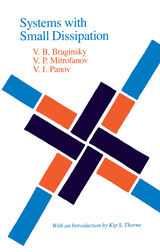
This book, first published in Russian in 1981 and updated with new data for this English edition, is a treatise on the sources of dissipation and other defects in mechanical and electromagnetic oscillators and on practical techniques for minimizing such defects. Written by a team of researchers from Moscow State University who are leading experts in the field, the book is a virtual encyclopedia of theoretical formulas, experimental techniques, and practical lore derived from twenty-five years of experience. Intended for the experimenter who wishes to construct near-perfect instrumentation, the book provides information on everything from the role of phonon-phonon scattering as a fundamental source of dissipation to the effectiveness of a thin film of pork fat in reducing the friction between a support wire and a mechanically oscillating sapphire crystal.
The researchers that V. B. Braginsky has led since the mid-1960s are best known in the West for their contributions to the technology of gravitational-wave detection, their experimental search for quarks, their test of the equivalency principle, and their invention of new experimental techniques for high-precision measurement, including "quantum nondemolition movements." Here, for the first time, they provide a thorough overview of the practical knowledge and experimental methods that have earned them a worldwide reputation for ingenuity, talent, and successful technique.
READERS
Browse our collection.
PUBLISHERS
See BiblioVault's publisher services.
STUDENT SERVICES
Files for college accessibility offices.
UChicago Accessibility Resources
home | accessibility | search | about | contact us
BiblioVault ® 2001 - 2024
The University of Chicago Press









